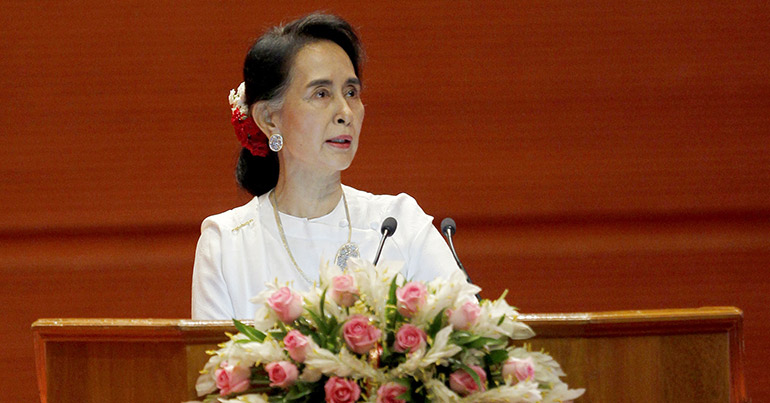Today marked the beginning of the five-day 21st Century Panglong Conference between Myanmar armed ethnic rebels and the government. But reports of violence in border regions have left some sceptical of the government’s ability to produce a lasting peace

Amid continued fighting between the Myanmar military and armed ethnic rebel groups, a five-day conference meant to bring peace to the country began in the country’s capital, Naypyidaw, today.
The 21st Century Panglong Conference is an attempt to end multiple rebel insurgencies that have been waged in Myanmar since the country’s independence in 1948. Resolving the country’s violence has been a goal of state chancellor Aung San Suu Kyi since her National League for Democracy party won a parliamentary majority last year.
Suu Kyi’s father, Myanmar independence hero Aung San, held his own round of negotiations in 1947, named the Panglong Conference. The forum saw major ethnic groups commit to joining the state of Myanmar, but the resulting deal fell apart under the military junta that later maintained control of the country for five decades.
Eight armed ethnic groups signed up to a ceasefire agreement with the Myanmar government in October 2015, but seven groups refused to sign amid ongoing distrust of the then-government and the military. Under the country’s current constitution, a relic of junta rule, the military maintains control of key institutions of power such as the defence and border ministries.
At the start of the conference, most rebel groups involved in the peace process, including non-signatories of the ceasefire, were in attendance, according to Frontier Myanmar. UN secretary general Ban Ki-moon is due to give a speech at the summit.
Yet as the conference kicked off, representatives from ethnic armed groups told AFP that the Myanmar military had attacked rebel outposts in Shan and Kachin states yesterday morning.
“For the moment it is hard for any group to believe or trust the army,” an unnamed negotiator for the armed rebels told AFP. “Here they are talking about peace, there they are fighting.”
The conference has received its share of criticism, but International Crisis Group Asia programme director Tim Johnston told Southeast Asia Globe that it was just the beginning of what would be a lengthy process.
“I think people have been very careful not to set goals in case they don’t get achieved,” he said, adding that the conference was “a confidence-building process, and setting unachieved goals would undermine that.”
The simple act of bringing the country’s complex array of armed ethnic groups to the negotiating table was respectable in its own right, Johnston said.
“I think it would be a mistake to underestimate the value of symbolism in this environment, and also to equate symbolism with no substance. The symbolism with people sitting down around a table and talking through their differences is very important.”
“There are a lot of tricky questions ahead,” he added. “This, I doubt, will answer them, but it will lay the groundwork for finding answers at least.”
According to UN figures released this week, some 220,000 people are currently displaced by ongoing fighting within Myanmar’s Kachin and Shan states, as well as by tensions in the western state of Rakhine.
Myanmar’s Panglong conference a shaky start to peace
Today marked the beginning of the five-day 21st Century Panglong Conference between Myanmar armed ethnic rebels and the government. But reports of violence in border regions have left some sceptical of the government’s ability to produce a lasting peace


